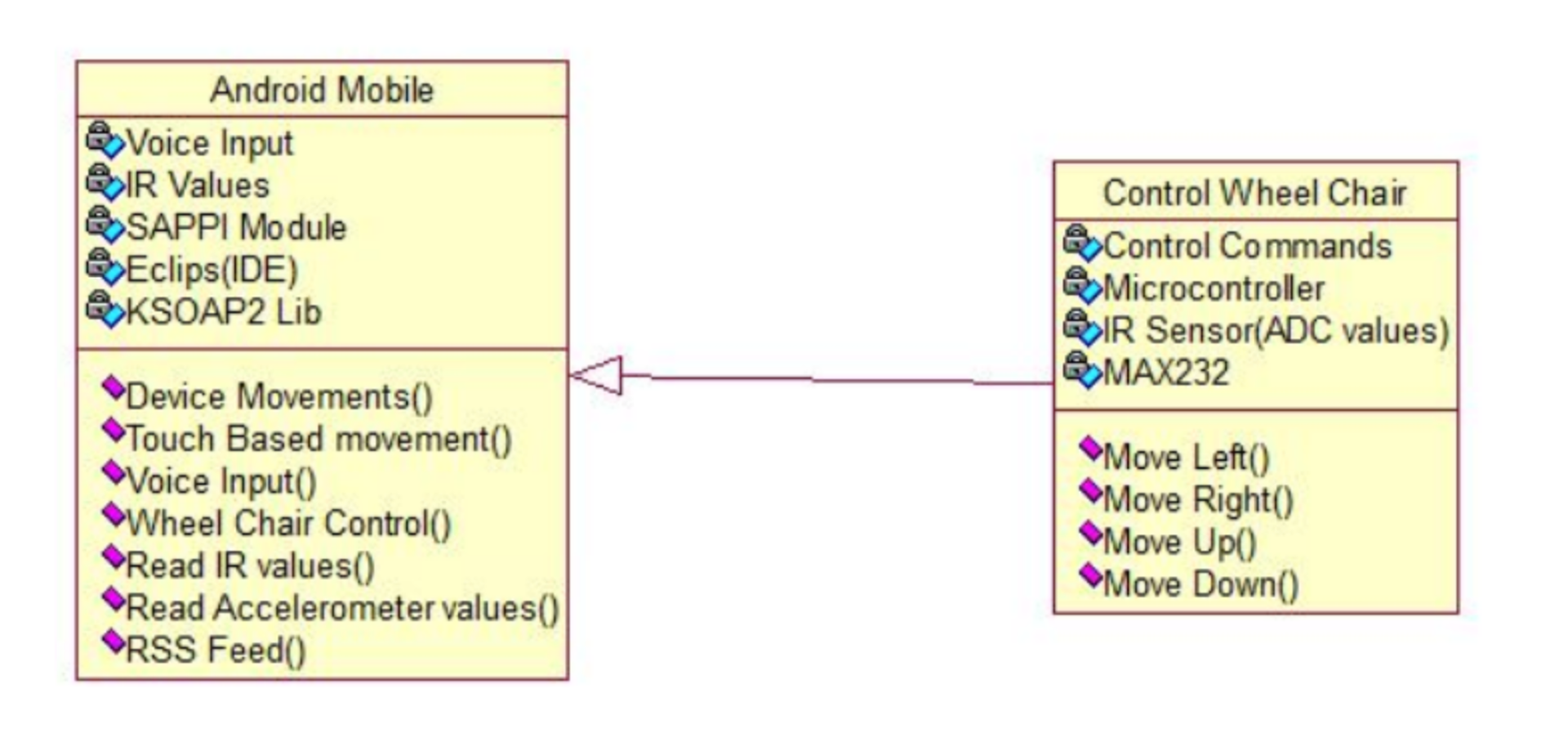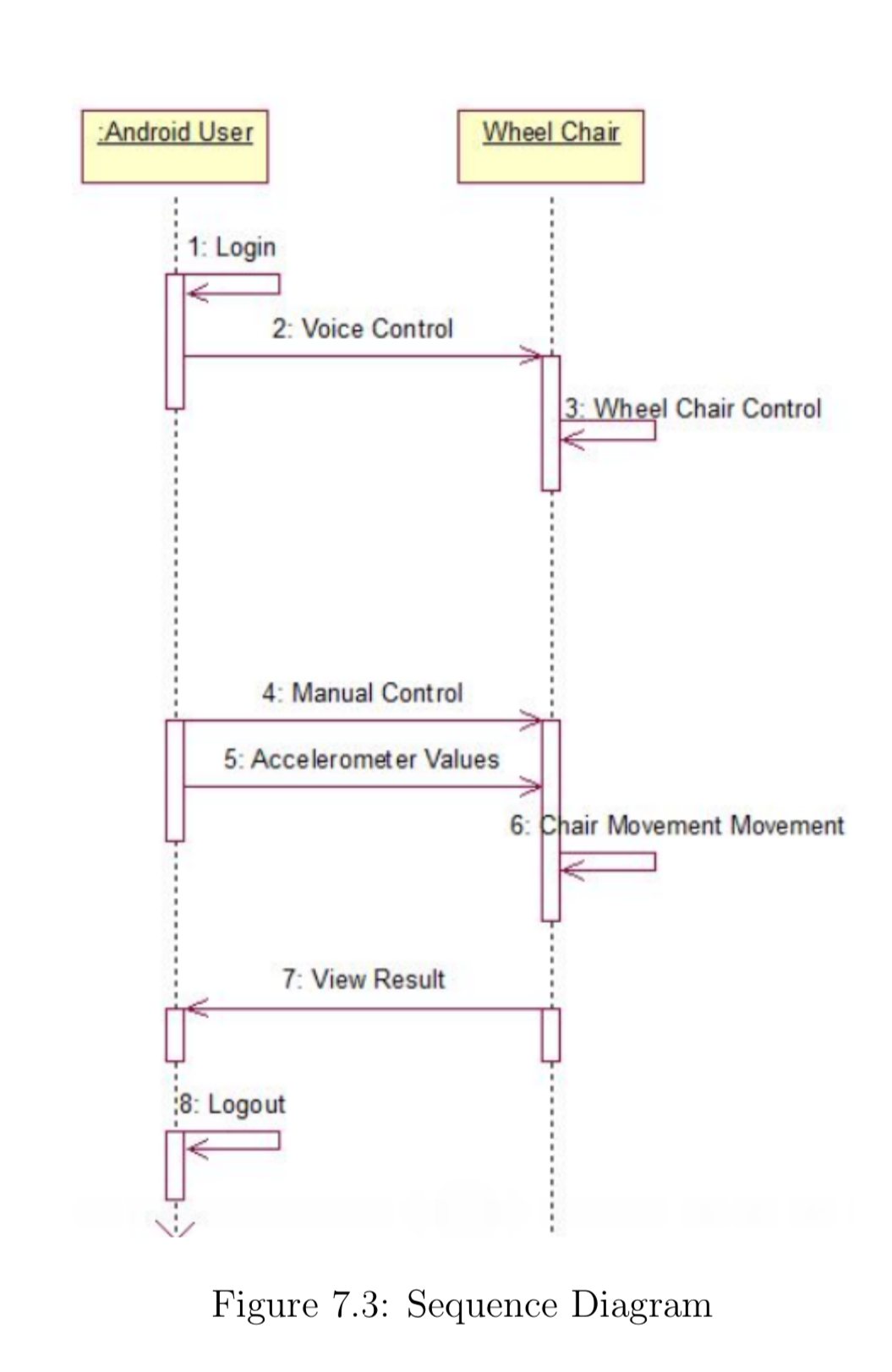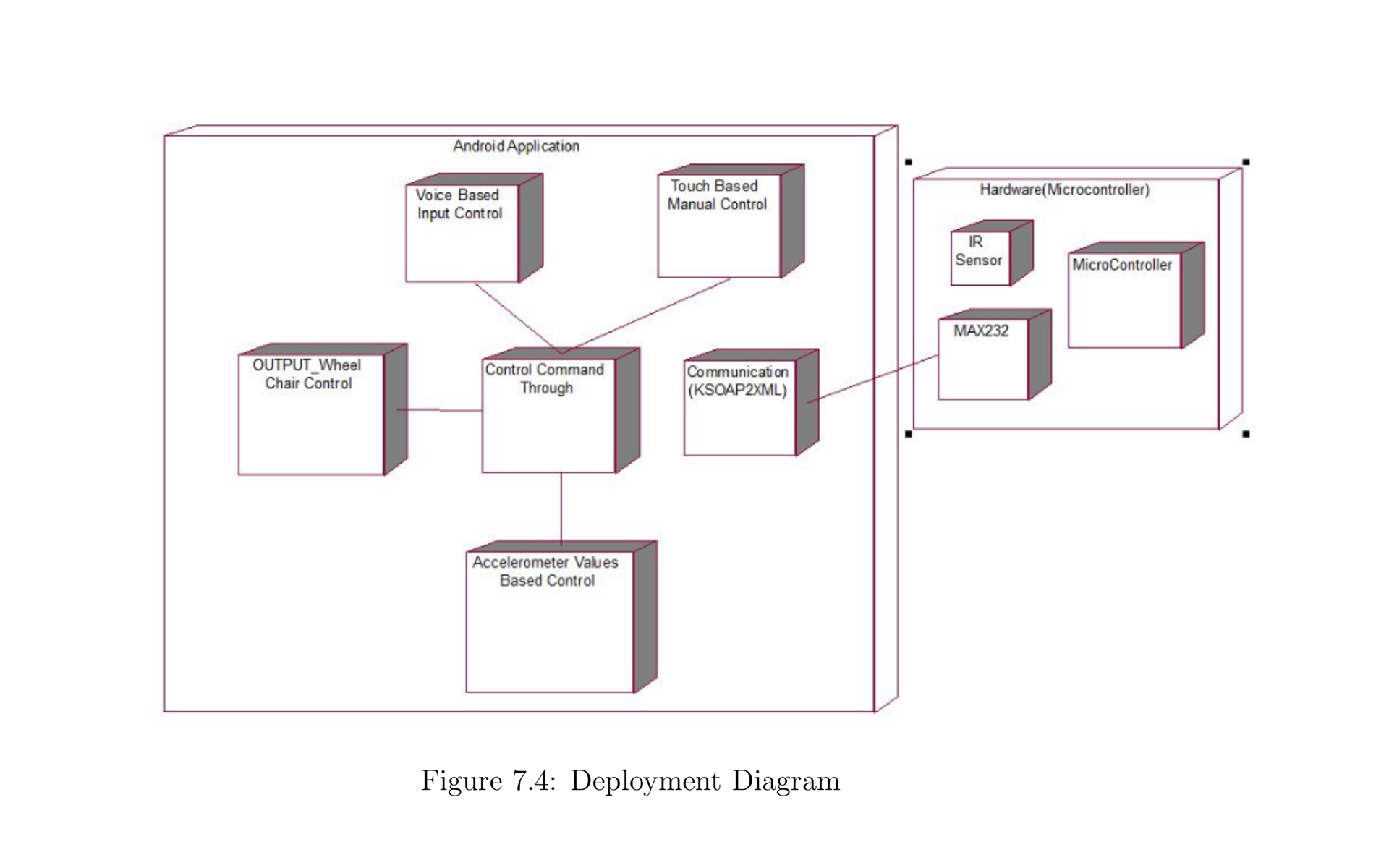ANDROID-BASED AUTOMATED WHEELCHAIR
This project is a bonafide work under the supervision of professors. It is submitted towards the Final fulfillment of the Bachelor of Engineering (Computer Engineering) requirement in 2016 whereas UI was redesigned in 2023.
Overview
Android based automated wheelchair is the wide spread prevalence of lost limbs and sensing system is of major concern in present day due to accident, age and health problems.
To assist the disabled, the proposed intelligent wheelchair system is designed for navigation in familiar en-vironments . The two modes of input control to the wheelchair are voice recognition and touch screen. When one want to change the direction, the touch screen sensor is modelled by pressing finger against the various quadrants on the touch screen, which has different values programmed for different direction. This can also be controlled through simple voice commands using voice controller.
By storing a single letter in voice recognition kit for each direction control, the recognition time is reduced drastically and thus quick reach to destination is obtained. The wheelchair consists of DC brushless motors at the rear end and it is controlled by using PWM technique. A brake control mechanism is included to control the wheelchair.
Keywords:
PIC microcontroller, Touch screen, PWM technique, Paraplegia, Wheelchair,Voice Recognation, DC brushless motor.
Problem Statement
1. Wheel chair stability is an issue in EXISTING wheelchairs . This issue creates a problem in navigating using a wheelchair.
2. Automatic Breaking system which is used for stopping and control- ling the wheelchair is missing from many present day wheelchair.
2. Automatic Breaking system which is used for stopping and control- ling the wheelchair is missing from many present day wheelchair.
3. Cost effective wheelchair is an issue.
4. Charging the battery after it gets discharged is an issue.
4. Charging the battery after it gets discharged is an issue.
Goals and Objectives
- To provide independent locomotion for handicap, unwell and elderly people.
- To provide safe and secure wheelchair with high stability rate and and grip and
- To provide highly effective cost efficient machine for locomotion.
Area of Project
• Medical Purpose
•Locomotion
Technical Keywords
- Eclipse Provides tools for developing applications.
- Android 4.2- Used for developing android application. - NetBeans Provides tools for developing applications.
- Android 4.2- Used for developing android application. - NetBeans Provides tools for developing applications.
Solution
- To provide independent locomotion for handicap, unwell and elderly people.
- To build cost eective system.
- To build cost eective system.
Motivation
-Parapleagic people in hospitals and rehabilitation centers.
-Ease and affordable for user .
-Ignorance of children to their Elderly parents.
-Affordable for organisations such as old age homes, rehabs, and
-orphanage .
-Numerous drawbacks in current system.
Project task set
Major Tasks in the Project stages are:
• Task 1: Requirement Gathering
• Task 2: Literature Survey
• Task 3: System Design
• Task 4: Functionality Implementation
•Task 5: Testing
Functional Model and Description
Use Case View
Data Flow Diagram
Non Functional Requirements
• Interface Requirements: User Interfaces:
- Tilt of Mobile phone.
- Voice command, Touch Command.
- Tilt of Mobile phone.
- Voice command, Touch Command.
• Communication Interfaces: - Bluetooth (HC-05 chip).
- Microphone.
- Accelerometer.
- Microphone.
- Accelerometer.
System Design
Component Design



Project Implementation
System Implementation Methodology
The eight principles listed below is built from a collection of procedures to establish an effective implementation methodology framework.
This framework provides exibility to react and adapt to the unique requirements of every project, incorporating the principles of:
1. Project Management Planning.
2. Scope Requirements Specification.
1. Project Management Planning.
2. Scope Requirements Specification.
3. Risk Issues Management.
4. Communication Training.
5. Quality Management.
6. Post-Implementation Review.
4. Communication Training.
5. Quality Management.
6. Post-Implementation Review.
7. Documentation.
8. Experience.
Algorithm
Step 1: Start
Step 2:.Turn on the power supply.
Step 3: connect wheelchair to android mobile phone via Bluetooth.
Step 2:.Turn on the power supply.
Step 3: connect wheelchair to android mobile phone via Bluetooth.
Step 4: Select one of the input mode, touch conmand or voiec regog- nation system.
Step 5: touch on any arrow or tilt the mobile or give voice command.
Step 5: touch on any arrow or tilt the mobile or give voice command.
Step 6: Driver circuit turn on.
Step 7:Wheelchair Moves in specified Direction.
Step 8: To stop the wheelchair letter ‘s’ is spelled or give the voice command.
Step 9: Driver circuit turn off.
Step 10: Wheelchair stops.
Step 9: Driver circuit turn off.
Step 10: Wheelchair stops.
Software Testing
Type of Testing Used:
- Unit testing
- Integration testing
- System testing
- Validation testing
- User acceptance testing
Old Design
These design were created in 2016 when the project was implemented only on android phones, the design was compatible to IOS devices and usability issues. A user friendly protyope is designed in 2022 where many accesibility options were impleneted and easy to access for all types of users of this application.
Accuracy Graphs
Future Scope
Many challenges in the android based automated wheelchair which need further research attention. Below, we list the open issue covering the design of entire automated wheelchair.
- Charging the battery of android cell phone after gets discharge is an issue.
- Charging the battery of android cell phone after gets discharge is an issue.
- Limited bluetooth range is an issue of proposed syatem.
References
[1]. Stucki G, Cieza A, Melvin J. The International Classification of Functioning, Disability and Health (ICF): a unifying model for the conceptual description of the rehabilitation strategy. Journal of Re- habilitation Medicine: official journal of the UEMSEuropean Board of Physical and Rehabilitation Medicine, 2007, 39:279-285.
[2]. Tuck-Voon How, Rosalie H Wang and Alex Mihailidis, Evalua- tion of an intelligent wheelchair system for older adults with cognitive impairments, Journal of NeuroEngineering and Rehabilitation 2014.
[3]. Mohammed FaeikRuzaij , S.Poonguzhali, Design and Implementa- tion of Low Cost Intelligent Wheelchair, Centre for Medical Electronics, Department of Electronics and Communication Engineering ,College of Engineering Guindy, Anna University, Chennai-600025, India.
[4]. Vasundhara G. Posugade, Komal K. Shedge, Chaitali S. Tikhe (2012) Touch-Screen Based Wheelchair SystemInternational Journal of Engineering Research and Applications (IJERA) ISSN: 2248-962Vol. 2, Issue 2, March-April 2012.
[5]. Hwee Bee Wong, Gek Hsiang Lim, Measures of Diagnostic Accu- racy: Sensitivity, Specificity, PPV and NPV, Health Services Research and Evaluation Division, Ministry of Health, Singapore, National Reg- istry of Diseases Office, Health Promotion Board, Singapore.
[6]. M.Prathyusha, K. S. Roy, Mahaboob Ali Shaik,Voice and Touch Screen Based Direction and Speed Control of Wheel Chair for Physi- cally Challenged Using Arduino, International Journal of Engineering
Publication Certificate